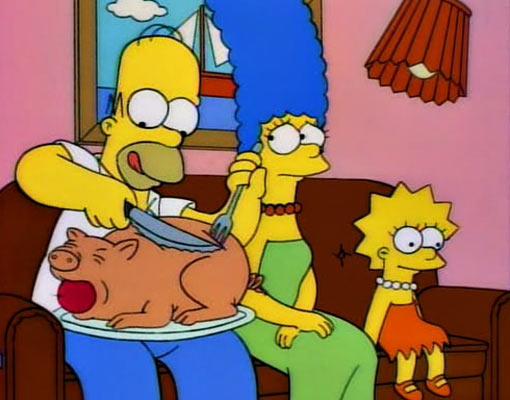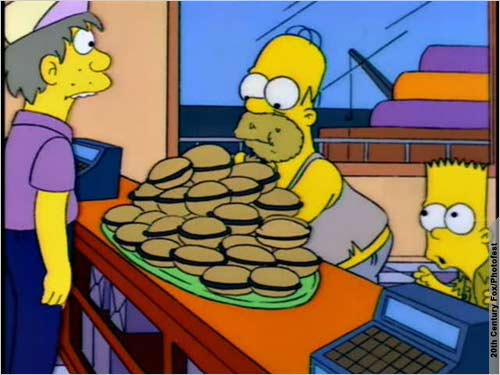Here are 10 basic eating rules your children don’t know as well as you think.
1. Snacking Can Be Unhealthy
In case you’re not aware, companies like U.S. Sugar Corp have backend deals to ensure their sugar crop is not only subsidized by the government, but embedded into as much food as possible. Nearly everything you eat is filled or covered with sugar; even fruit today has more sugar content than it did 100 years ago (watch The Botany of Desire on PBS for more info). The healthy snack you choose may not be as healthy as you think. “Parents often think that granola bars, chocolate milk, or muffins, which are loaded with sugar, are good for students,” says former teacher Leesha Nikkanen. Instead, she recommends parents “pack their kids’ lunches with fruit and nut bars, such as Lara bars, homemade gluten- and sugar-free cookies, drinks sweetened with agave or stevia, or milk flavored with cocoa powder.”
2. Soda Isn’t Water
They’re both liquid, and there is water in soda, but that doesn’t make soda healthy. Kids have a tendency to gravitate toward sugared drinks such as soda, juice boxes (which rarely contain more than 10% actual juice), and chocolate or strawberry milk. These are all full of sugar, which is probably making them hyperactive and is definitely dehydrating them (and putting them at risk for diabetes and cavities to boot). Making your child drink at least 4-6 cups of water each day will ensure they live long enough to hate you for it later.
3. If It’s Night, Eat Light
Your body’s natural metabolism is faster in the morning and slows down at night. As a human being, your child is no different. Kids love eating at night, the later, the better. They always seem to get hungry right before bedtime. The problem with kids eating at night that the process of digestion can cause poor quality sleep, and they may still feel too full in the morning to eat breakfast. Breakfast is important, however, because it provides the energy to get through the day. Skipping breakfast has been tied to poor school performance, as well.
4. You Are What You Eat
When you eat something, your stomach acid dissolves it, breaking it down into chemical compounds your body uses to build and rebuild itself. The human body is largely comprised of six elements: oxygen, carbon, hydrogen, nitrogen, carbon, and phosphorus. When you eat natural foods (plants and animals), your body is provided with the necessary building materials to create muscle, bone, blood, hair, and skin – this is why nutrition is so essential. Eating heavily processed foods unbalances the chemical reserves your body has to work with when building and rebuilding. Instead of the natural proteins, calcium, and carbohydrates it needs, your body will be built from the plastics, gels, and gums contained in candies, cookies, and other snacks. This won’t just affect your physical health; your brain depends on what you eat as well. “The brain is made of fat,” nutritionist Danielle Girdano explains. “The brain of a child doesn’t fully develop until he or she is between 22 and 25 years old. DHA and EPA fatty acids are crucial not only to the development of the brain, but to the cognitive and functioning potential of it.”
5. The Calories Are in the Sauce
This is something adults seem to struggle with as well – if you think dousing a salad with dressing is dieting, you’ll never lose weight. It never ceases to amaze me how many people hate eating salad, yet they do it anyway in the name of dieting. They then proceed to fill that salad with so much cheese and dressing that it actually has more salt, fat, and calories than they would’ve consumed if they’d had a burger. We all say we know salad dressing is unhealthy, but we’re usually saying it while eating it. It’s not just salad dressing; most condiments (aside from mustard and hot sauce) are filled with calories. Adding extra sauce to pizza and pasta adds more sugar, salt, and calories than you probably realize, as well. Make sure your kids are eating foods they actually enjoy so they’re not tempted to drown everything in sauce to get it down. One way to find out is to ask them what they like and involve them in the grocery shopping.
6. The Five-Second Rule is Bunk
I notice people mostly invoke the five-second rule to excuse why they’re eating food off the floor like animals. You dropped a chip and really don’t want to waste it? I’m down with conservation, but if you seriously believe bacteria and dirt take five seconds to touch your food, then by all means lay your morning toast in the cat’s litter box butter side down for 4 seconds, then pick it up and eat it without examining it. Don’t worry…five-second rule.
7. Cook Like Mama Used to
Home cooked meals are healthier (and cheaper) than prepared meals at stores and restaurants (especially fast food places, where the employees are often treated poorly and willing to take it out on unwitting customers). Your kid wasn’t born with the ability to cook, but if they see you (or their friends’ parents) doing it often enough, they’ll get curious. Cook at home, and teach your kids to do so as well; this will ensure they’re resourceful enough to eat healthfully in a variety of situations. With any luck, they’ll avoid becoming dependent on fast food and other unhealthy conveniences.
8. Fruit Flavor Isn’t Fruit
Starburst isn’t fruit…Skittles aren’t fruit…Gummy cherries aren’t fruit…Strawberry soda isn’t fruit. Just because something is fruit-flavored does not mean you’re eating fruit.
9. Stop in the Name of Love
Portion control is an essential part of nutrition. A slice of cheese is good for you; not so much a pound of cheese. Some people’s idea of portion control is eating an entire cake in smaller bites to give the body time to digest it. They’re still eating an entire cake. “Calories in – calories out” is a great way to look at portion control. You’re more than welcome to eat a 1000-calorie slice of cheesecake, but you’ll need to follow it up with a 1000-calorie workout if you want to stay healthy. In order to teach portion control to kids, Chris Weiler, a Youth Athletic Development Specialist, recommends a three-quarter rule: “Your protein and carbohydrate servings should take up about the same amount of space as each other on three-quarters of your plate. It doesn’t have to be exact, just in visual proportion. The last quarter…is filled with whatever.” Kids love the illusion of free will, so it’s essential you give them as much choice in their lives as possible, while still making sure to present them with only the options you’re willing to follow through on.
10. Shut Yo Mouth
My biggest pet peeve is people who don’t close their mouths when they eat. Do you realize that when you eat with your mouth open you’re making disgusting sounds that everyone around you finds unattractive? Believe me, nobody needs to hear every disgusting chomp and ear-curdling smack coming from your mouth when you eat. Learn to think about others around you, and perhaps eat as though you’re a civilized human being instead of some ravenous wild boar. Absolutely nobody wants to sit and listen to you eat, so you’ll find fewer people give you disgusted looks when you close your mouth to eat. Just to be clear, this means open your mouth to put food in, and close your mouth until it’s empty. Breathe through your nose (everyone does it; it’s entirely possible) and whatever it is you have to talk about can wait until after you’ve swallowed. If you don’t follow these rules, know that you fill everyone around you with rage during meal times, and people will politely avoid you rather than torture themselves with your spine-tingling lack of respect. These things are things you might think your kids already know, but they don’t. Teach them, and they will be healthier for it.


